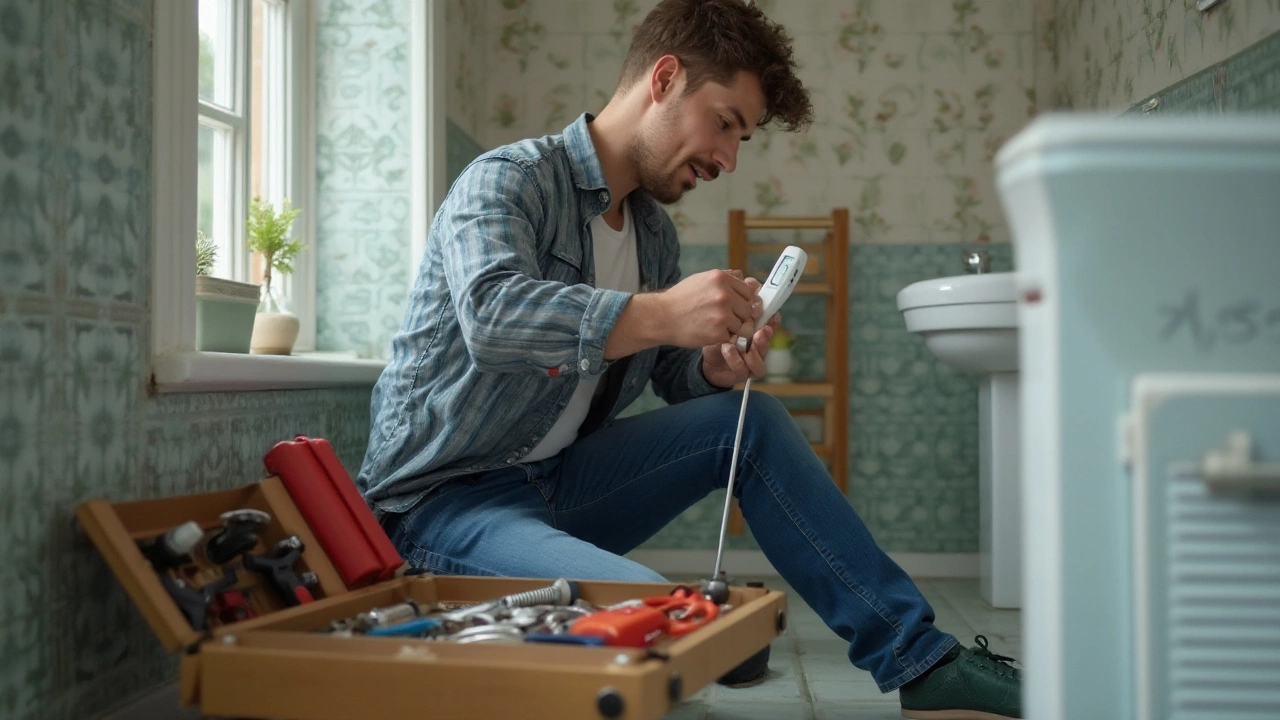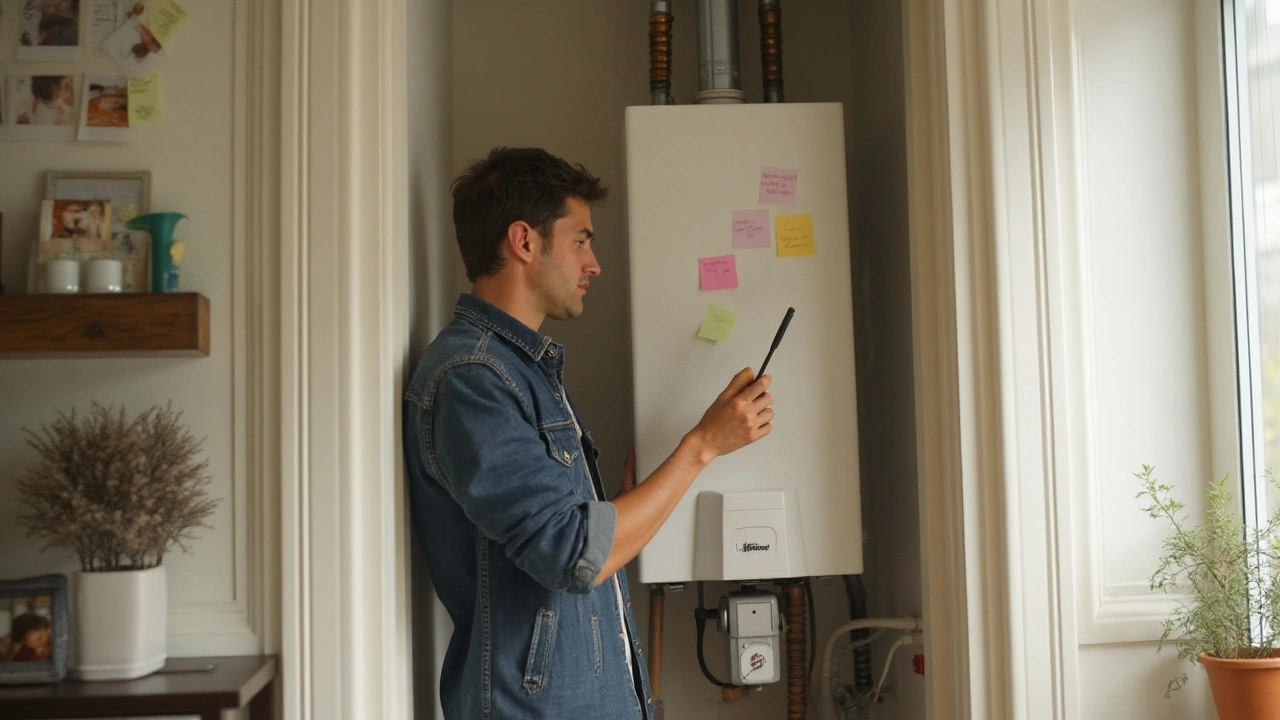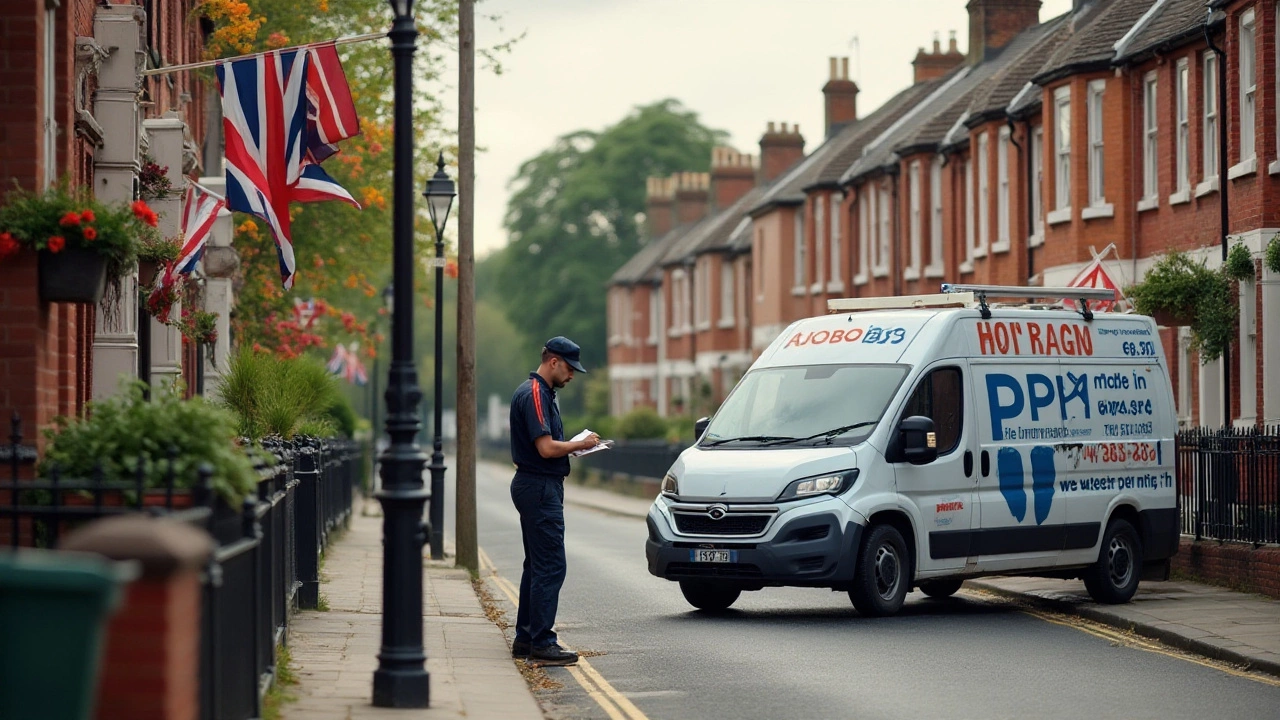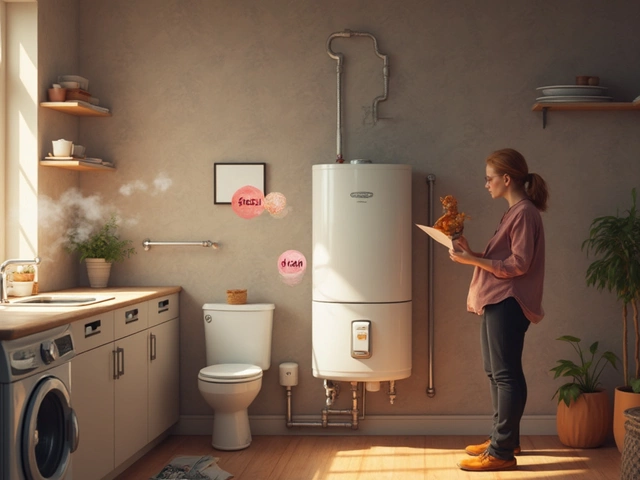Few things bring more comfort than a hot shower, especially on a chilly January morning. When your shower suddenly turns icy, it feels like a betrayal by your own plumbing. It's time to roll up your sleeves and identify the culprit. From my own experience fixing these pesky issues—without missing a walk with Muffin, my trusty canine assistant—I've learned quite a bit about hot water systems.
In this guide, I'll share practical tips on what might be happening with your shower's hot water. We'll explore quick checks and adjustments you might not have considered yet. Whether it's the thermostat settings or a sneaky valve problem, addressing these nagging issues doesn't have to be complex.
- Common Causes of Cold Showers
- Troubleshooting Steps for Water Heaters
- Temporary Solutions While Waiting for Repairs
- When to Call a Professional Plumber
Common Causes of Cold Showers
Cold showers can really shiver your timbers, especially when you're craving that comforting warmth. Let's delve into some common reasons your shower might be sneakily switching to the arctic setting, leaving you to ponder what went awry. One usual suspect is the water heater's thermostat setting. You see, if the thermostat is inadvertently dialed too low, it’ll limit the temperature of the water circulating through your shower pipes. This is particularly common in homes where the heater dial is easily bumped or adjusted during maintenance.
Another frequent cause could be a malfunctioning heating element within the water heater itself. If you have an electric heater, it's possible for one of the heating elements to burn out. A broken heating element leaves the remaining one working overtime, often unable to keep up with demand, especially during peak usage times. This can result in those dishearteningly tepid showers. Interestingly, gas water heaters can have a similar plight. A faulty thermocouple or pilot light that’s gone out will prevent the heater from getting water to the desired temperature.
Moreover, sediment build-up at the bottom of the water heater tank could be one of the silent offenders. Hard water is notorious for leaving mineral deposits everywhere. Over time, these sneaky accumulations form a sludge at the base of the tank, acting like an insulator between the heating components and the water. Less heat reaches the water, resulting in warmer wishes but colder washes. Regular flushing of the heater tank is a preventative measure that can keep this pesky problem at bay.
An often overlooked culprit could actually lie with your plumbing system, not the heater itself. Crossed water lines can lead to an unintentional mixture of hot and cold water. This happens when hot water lines are too close to cold ones or if valves are installed incorrectly. In fact, bad mixing valves can be particularly frustrating. If, for example, the anti-scald feature locks into place at too low a setting, it can prevent hot water from flowing properly. Keeping line diagrams handy or consulting with a professional can eliminate cross-line issues.
"A thorough understanding of your home's plumbing setup can help prevent these cold encounters," advises Lisa Gilbert, a plumbing expert with over 20 years of experience.
Finally, don’t undervalue the potential impact of faulty shower heads or faucets. Over time, they may suffer from sediment build-up or mechanical wear and tear that mismanage water temperature settings. Regular cleaning or opting for an upgrade to thermally controlled fixtures could alleviate this issue.

Troubleshooting Steps for Water Heaters
Nothing dampens the day quite like a shower that refuses to deliver hot water. Whether it's an electric or a gas heater, understanding the common issues and their fixes can save you time and frustration. First, your go-to move should be checking the thermostat settings. Sometimes the thermostat can be accidentally set too low, especially in households where others might fiddle with the settings unknowingly. It’s advisable to set it around 120 degrees Fahrenheit for optimal performance. A mere adjustment might get your hot water flowing again.
For electric water heaters, another told remedy involves inspecting the circuit breaker. A tripped breaker can cut off power to your heater, and you'll need that switch flipped back. However, if your heater continues to trip the circuit, it may signal a deeper electrical issue that needs professional attention. Don’t shy away from investing a little effort into checking dual-element models to confirm if both heating elements are working correctly. Faulty elements can halt the heating process entirely. Testing them with a multimeter will reveal if they need replacing.
"Routine maintenance of your water heater can prevent most disruptions. Regular inspections add years to their life," says Mary Johnson, a seasoned plumber with Home Plumbing Advisors.
For gas heaters, ensuring that the pilot light is burning is an essential step. A draft or strong wind can extinguish it, cutting off your hot water supply. If your heater uses a standing pilot, simply relighting can be a quick fix. If it’s an electronic ignition system, check whether it’s creating a spark. No spark likely calls for some electrical tweaks or parts replacement. Another key step is to ensure the gas valve is open and properly aligned to ensure unimpeded gas flow, as any disruption here will prevent your burner from igniting.
Remember the importance of addressing sediment build-up, common in older heaters. Over time, minerals from hard water accumulate and coat the bottom of the tank. This layer acts as an insulating barrier, and it can dramatically reduce heating efficiency. You can alleviate this by flushing the tank annually. Drain out the water, clear away the sediments, and refill the tank to restore efficiency. If the task feels too grueling, a professional plumber can lend their expertise.
Additionally, inspecting the temperature and pressure relief valve safeguards against potential hazards. This little component is crucial in releasing pressure buildup, which, if ignored, could lead to severe malfunctions. If it's leaking or not functioning altogether, consider it as a much-needed call to replace it at your earliest convenience.
| Potential Problem | Solution |
|---|---|
| Thermostat set too low | Adjust to 120°F |
| Tripped Circuit Breaker | Reset breaker |
| No pilot light | Relight manually |
| Sediment build-up | Flush tank |

Temporary Solutions While Waiting for Repairs
It's a familiar story: you step into your shower expecting the warmth of hot water to wash over you, only for your enthusiasm to be dampened by an icy blast. It can take time to diagnose hot water issues, let alone schedule and complete repairs. Meanwhile, there are interim solutions to soothe your cold shower blues. One practical approach is the bucket bath method, popular among those mindful of water usage or dealing with plumbing anomalies. Fill a bucket with hot water from your kitchen or another source and use a cup to pour this over yourself—certainly not the glamour of a perfect shower, but it's effective in a pinch.
Another creative solution might involve embracing the contrast shower experience, which has garnered attention for its health benefits such as improved circulation and a supposed boost to the immune system. Switch between cold and less cold water while you shower, which some enthusiasts swear increases alertness and skin vitality. Adding a few pots of stove-heated water to your bath every few minutes is another workaround. This hands-on habit was a household staple before water heaters ever entered the scene, and it works astonishingly well as a stopgap measure. Plumbing tips from decades past often reveal these time-tested strategies that remain surprisingly relevant.
While you adapt, it's vital to ensure your safety.
"Avoid burning yourself when transferring hot water manually," advises the American Plumbing Association. "Always test the temperature with a part of your body that is less sensitive, like your elbow."
Ice-bucket challenges aside, some households resort to portable shower heaters. These compact devices heat water instantaneously, providing a decent alternative to your home's hot water system. Simply attach the heater to your existing shower or a handheld showerhead, and voilà, improvised hot water at your beck and call. Though not ideal for the long term, they offer a temporary reprieve while you wait. Local hardware or camping stores often stock these units, and online shopping can quickly deliver this hot water fix right to your door. Remember, each option demands due diligence: check for safety certifications and ensure compatibility with your shower setup before making any quick decisions.
To wrap up, it's useful to reflect on water consumption. Cold or lukewarm showers prompt us to consider how much water we truly use. This experience might inspire permanent changes, such as shorter showers or modern efficiencies, even after the hot water returns. With these temporary fixes at your disposal, you're well-equipped to brave that temporary cold front until expert intervention restores your shower bliss.

When to Call a Professional Plumber
It's one thing to tackle minor plumbing issues around the house, but when it comes to securing the return of your hot water, knowing when to call in an expert can save you time, money, and hassle. A professional plumber brings a wealth of knowledge and tools to diagnose what's wrong quickly and efficiently. So, when does it become necessary to reach out for their expertise?
First, if you've checked all the usual suspects—like the thermostat settings and pilot light on your water heater—and the issue persists, it's time to consider professional help. Modern water heaters can be complex, with electronic components that aren't always straightforward to inspect without specialized equipment. Plumbers can access diagnostic tools that quickly pinpoint deeper issues that might involve more than just a faulty igniter or sediment buildup.
Next, if there's noticeable leakage around your water heater or unusual noises such as popping or hissing, these could be indicative of serious internal problems that require in-depth inspection and repair. Leaving these issues unattended can escalate, leading to more extensive damage and even the risk of flooding in your home. Such situations demand the swift and knowledgeable action of a skilled professional to avoid further complications.
A plumber is also crucial when dealing with plumbing tips like replacing large components. Whether it's the pressure-relief valve crack or a failing heating element, replacing them incorrectly can lead to avoidable accidents or more severe malfunctions. Furthermore, if your hot water has gone AWOL along with other faucets, this may suggest an issue with the main water supply line, a scenario that typically needs seasoned hands and tools to resolve.
There are times when the problem might be the water heater size isn't meeting your home's demand. A professional can provide invaluable guidance on whether your existing system needs an upgrade or if other adjustments can optimize the current system. According to the Department of Energy, an improperly sized water heater can waste a significant portion of your energy budget. If your daily routine is akin to a cold splash more often than you’d like, expert advice may pinpoint a capacity misalignment.
"Plumbing is not just technical; it’s a balance of art and skill. Knowing when to pivot and call an expert can be your biggest asset," says Philip Jones, a reputable name in home mechanics consultancy.
Lastly, recognize that if the problem involves gas lines or involves extensive handling of electrical circuits, safety must come first. A professional plumber adheres to safety standards that protect your home’s infrastructure and your family's wellbeing—attempting these repairs without proper training can pose significant safety risks.




